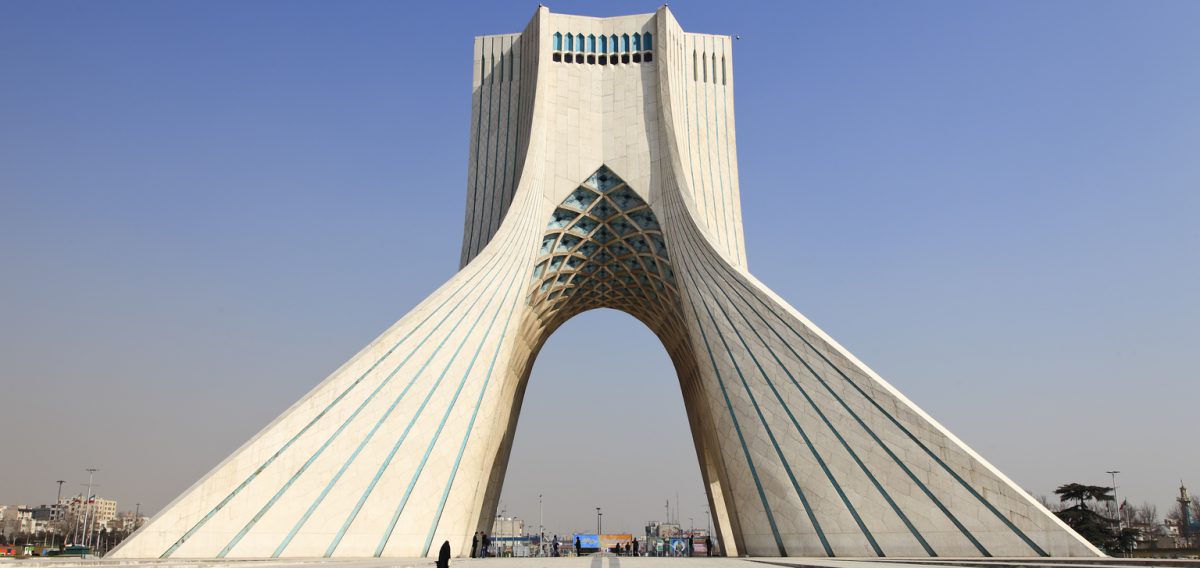I know we’re all a bit preoccupied these days waiting ever patiently for the next shoe to drop in Special Counsel Robert Muller’s investigation into Russian interference in the 2016 presidential election. The last few days have been a real firestorm of news on that front with the first indictments being handed up in that case.
One could be forgiven for missing a small, but interesting, news item out of Iran that surfaced over the weekend. On Sunday, semi-official Fars News Agency reported that Iranian President Hassan Rouhani had rejected an overture by U.S. President Donald Trump for a meeting on the sidelines of the United Nations General Assembly this past September. The request reportedly came a day after Trump’s bombastic speech to the General Assembly in which he called the Iranian government “a corrupt dictatorship behind the false guise of a democracy…whose chief exports are violence, bloodshed, and chaos.” Iranian Foreign Ministry spokesman Bahram Ghassemi confirmed the Fars report in a press conference shortly thereafter.
Naturally, questions abound here. Why on earth, after months of very publicly demonizing Iran, would Donald Trump suddenly try to meet with his Iranian counterpart? Why would he choose to request such a meeting a day after giving one of his most inflammatory speeches on Iran to date? Why would he or members of his administration think that a high-level meeting between the two presidents would be politically feasible, especially considering that they had cut off all lower level communications forged during the negotiations over the nuclear deal? Not even during the good ol’ days of the Obama Administration, when there was extensive personal contact between high-level officials of the U.S. State Department and the Iranian Foreign Ministry, did either side think the political environment appropriate to attempt something so ambitious.
The White House has, predictably, denied that any such request was ever made, but given their shaky record with the truth, it’s hard to know whether or not to believe them. It’s not out of the realm of possibility that Trump and his team are naive enough to believe that they can do or say anything they like on the world stage — no matter how insulting to the Iranian leadership or people — without any repercussions. It’s also possible that Trump is arrogant enough to think that he could skillfully deploy his MASTER NEGOTIATING SKILLS (TM) to privately convince Rouhani that Iran should bend to the Trumpian will.
Still, even if we grant the Trump administration the benefit of the doubt and accept their claim that Iran is lying, then there has to be some kind of intent behind that lie. Rouhani and his administration officials are not as reckless with their words or deeds as Trump and his team. Foreign Minister Javad Zarif, for example, recently told an interviewer that it takes him well over an hour to craft a single tweet, during which time he gets feedback from a variety of other government officials before hitting the publish button. The idea that they would fabricate a meeting request over a month after the fact with no ulterior motive or discernable benefit strains credulity.
One rumor going around is that the “leak” of the details of the aborted meeting is a Rouhani-engineered gambit designed to bolster his domestic standing by making him look tough by standing up to Trump. There’s a degree of plausibility to this story. Rouhani’s alleged rejection of the U.S. President’s overtures to diplomacy, whether real or not, could score him a few cheap points with more conservative factions in Iran, further solidifying his power base and unifying the population behind his presidency. Portraying Trump as the initiator of the request to meet is a particularly cunning detail since it puts the onus of disproving the allegation on the U.S. government, whose credibility among the Iranian population (and, for that matter, most of the American population) is notoriously lacking. It also has the added benefit of making the U.S. President seem both weak and hypocritical in the context of his hardline rhetoric on Iran.
There’s one more interesting wrinkle to this story. A report by Robert Parry on Consortiumnews.com actually made mention of this proposed meeting two weeks ago. “There was even the possibility of a Nixon-goes-to-China moment,” Parry wrote on October 15, “with tough-guy Trump meeting with Iranian President Hassan Rouhani and the two countries restoring diplomatic ties.” The revelation of the meeting proposal is a side note in an article primarily focused on Israeli Prime Minister Benjamin Netanyahu’s influence over Donald Trump, and Parry suggests that the decision to kill the proposal stemmed from a meeting between Trump and Netanyahu in New York on September 18.
Parry’s reporting is interesting, but it creates more questions than it answers. The timeline he suggests differs somewhat from the Iranian version, which claims that the offer to meet did not come until after Trump’s speech to the General Assembly on September 19. It also seems a bit far-fetched that Trump’s goal in holding this meeting might have been the first step on a path to the restoration of U.S.-Iran diplomatic ties, something that hasn’t formally existed since the storming of the American embassy in Tehran in 1979. Still, the fact that Parry had learned about the proposal and reported on it back in mid-October somewhat lessens the probability that this was a wholesale fabrication by the Iranian Foreign Ministry.
No matter who is telling the truth here, this story is unlikely to amount to anything more than an odd historical footnote. It barely warranted mention in most U.S. press, and it’s not like the U.S. and Iran are anywhere near a path to reconciliation following Trump’s decertification speech a few weeks ago. Looking forward, the big issue still to be settled is what action the U.S. will take, if any, against European companies seeking to do business/invest in Iran. That will be the determining factor in whether the nuclear deal survives and whether U.S.-Iran relations continue to deteriorate.

